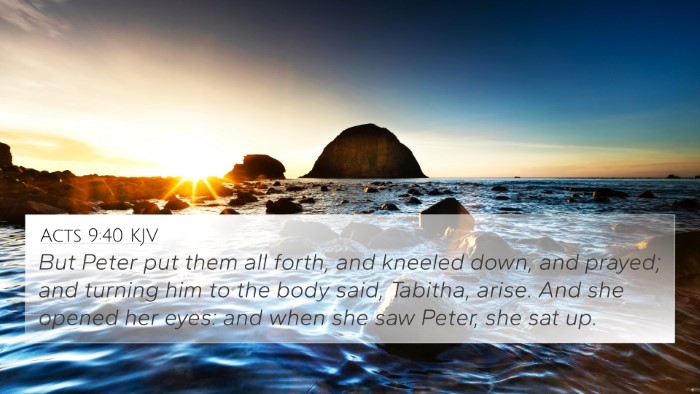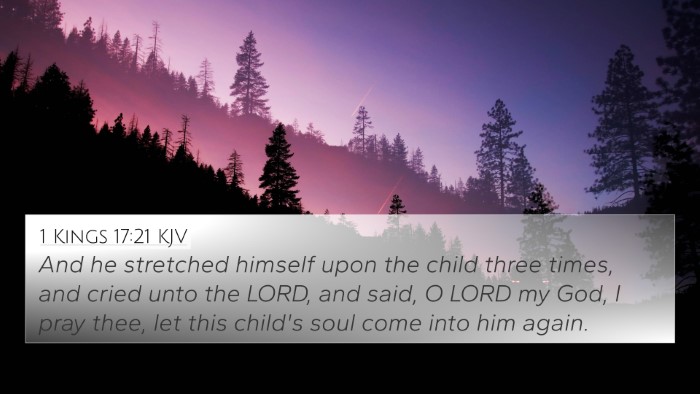Understanding John 11:43
In the Gospel of John 11:43, we witness a profound moment of divine power and human faith as Jesus commands Lazarus, who had been dead for four days, to come out of the tomb. This miraculous event is not only a demonstration of Christ's authority over life and death but also serves as a pivotal point in His ministry. Below we explore the rich meanings of this verse, drawing insights from various public domain commentaries.
Verse Text
John 11:43 - "And when he had thus spoken, he cried with a loud voice, Lazarus, come forth."
Significance of the Miracle
According to Matthew Henry, this miracle illustrates the power of Christ’s word. His command to Lazarus signifies that Jesus is not just a healer, but the very source of life. The authority with which He speaks underscores the divine nature of His mission on earth. In this moment, Jesus reverses death, demonstrating His supremacy over the grave.
Albert Barnes adds that this event is crucial for the disciples and the surrounding community. It serves to bolster their faith, showing them that Jesus holds power over physical death and offers a glimpse of the resurrection that believers can expect. The act of calling Lazarus by name illustrates the personal nature of Jesus’ relationship with His followers.
Adam Clarke emphasizes the necessity of faith in experiencing the full impact of Jesus’ miracles. The act of calling Lazarus—who represents all humanity bound by sin and death—shows that while Christ initiates the power of resurrection, it requires a response, reflecting the relationship between divine initiative and human participation.
Thematic Connections
John 11:43 connects deeply with several themes throughout the Bible. Below, we list some notable Bible cross-references that complement and enhance the understanding of this verse:
- John 5:28-29 - Emphasizes the resurrection of the dead.
- Romans 8:11 - Discusses the Spirit who raised Jesus and will give life to our mortal bodies.
- 1 Corinthians 15:54-57 - Describes victory over death through Jesus Christ.
- Revelation 1:18 - Jesus declares Himself to be alive forevermore and has the keys of hell and death.
- Matthew 9:25 - Jesus commands a girl to arise, portraying similar authority.
- Luke 7:14-15 - Jesus raises a widow's son, highlighting His compassion and authority.
- Isaiah 26:19 - A prophecy about the resurrection of the dead, enhancing the context of resurrection hope.
Cross-Referencing Biblical Texts
The act of cross-referencing Biblical texts deepens comprehension and uncovers layers of meaning. This is an approach encouraged in Bible study. By engaging in comparative Bible verse analysis, believers can establish connections and parallels that unveil how the narrative of Lazarus correlates with themes of resurrection and life throughout scripture.
Tools for Bible Cross-Referencing
For those looking to explore deeper connections, utilizing a Bible concordance can be beneficial. Tools like the Bible cross-reference guide or digital Bible reference resources aid in revealing links between verses, enriching one's study of scripture. The aid of a Bible chain reference system can be particularly useful when preparing sermons or personal studies.
Identifying Connections
To find insights on how passages relate, one might ask: What verses are related to John 11:43? or How do John 11:43 and Revelation 1:18 connect? Such inquiries prompt exploration of the thematic Bible verse connections, shedding light on God's promise of eternal life juxtaposed with the physical death present in our world.
Conclusion
John 11:43 encapsulates the essence of Christ's ministry—one that binds the themes of mortality, resurrection, and everlasting life. As seen through the insights of Matthew Henry, Albert Barnes, and Adam Clarke, Jesus' command not only restored Lazarus but symbolizes the hope believers have in Him. Understanding this verse within its broader biblical context through cross-references enhances our grasp of the transformative power of Jesus’ words.










